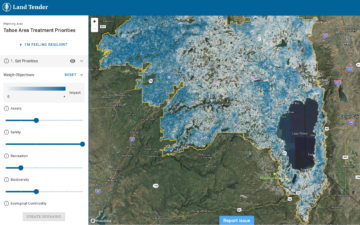
At the COP26 conference in Glasgow this week, a coalition of large companies, national governments and NGOs will announce milestones in an innovative approach to preserve tropical forests. If it works, it will send hundreds of millions, perhaps even billions of dollars to local farmers, landowners and communities to protect and restore their land.
The LEAF Coalition, launched in April, set out to create a market for protecting tropical forests by paying locals not to destroy them, primarily through logging, cattle and agriculture. The hope is that by curtailing such activities, these critical ecological regions — such as the Amazon in South America, the Congolian rainforests in Central Africa and Southeast Asia’s rainforests, which extend from Myanmar to Indonesia — will continue to provide the carbon-sequestration services the world needs to keep climate change in check.
Along the way, LEAF could help companies achieve their net-zero goals in a way that also might mitigate greenwashing claims.
The scheme — a partnership among the governments of the U.K., Norway and the United States — already has attracted the participation of more than 20 multinational companies, including Amazon, Bayer, GSK, Delta Air Lines, Nestlé, PwC, Salesforce and Unilever. This week, the coalition is expected to announce new corporate partners as well as additional national and regional governments that have signaled their interest to receive payments to reduce deforestation.
LEAF could help companies achieve their net-zero goals in a way that also might mitigate greenwashing claims.
The coalition also will provide an update on its immediate goal of mobilizing $1 billion for countries and states committed to protecting tropical and sub-tropical forests and reducing deforestation. That first billion is only the beginning of the group’s ambitious plans to secure tens of billions more in the coming decade.
For Eron Bloomgarden, who spearheaded LEAF’s creation, there’s no more important climate strategy.
“Most people learn when they’re in grade school that forests breathe in CO2 and breathe out oxygen,” he told me last week. “As a result, the role of forests in the climate space is viewed as, ‘Let’s plant more trees.’ A big gap in people’s intuitive knowledge is that forests are also a huge source of emissions, meaning that the destruction of the forests releases a huge amount of CO2 into the atmosphere.”
Bloomgarden, who has spent more than 20 years at the intersection of finance and emission reduction projects, noted that the emphasis to date on tree planting and carbon removal overlooks the critical need to keep existing carbon sinks — especially tropical forests — intact.
But how to do that? Global efforts, notably REDD+ — a framework created by the United Nations COP process to reduce emissions from deforestation and forest degradation that is part of the 2015 Paris Agreement — have had limited success to date, due in part to their complexity.
Meanwhile, forest loss continues at an alarming rate. Last year, for example, destruction of Brazil’s Amazon rainforest hit a 12-year high. Even more terrifying: In July, a team of scientists reported that the Amazon is emitting more carbon dioxide than it can absorb. That’s a stunning turnaround for a region once referred to as “the lungs of the earth.”
TREES, please
Under LEAF, tropical forest countries and states commit to preserving their forests in exchange for payments that catalyze sustainable economic development. Companies that meet LEAF’s requirements commit to buying emissions reductions credits from avoided deforestation. The whole process takes place according to established verification protocols and standards, with money paid out once reductions are verified.
When the group issued a call for proposals in April, it received an overwhelming response: More than 30 jurisdictions, from Brazil to Uganda to Vietnam, offered up more than a billion metric tons of potential reductions of CO2 equivalent — up to 2 billion acres of forests, a landmass larger than the European Union.
It’s important to note that LEAF isn’t just about stopping illegal deforestation. Much of what the program targets are government-sanctioned forest clearings that support economic development. To replace that income, LEAF’s finances flow directly to Indigenous peoples and forest communities via third-party accredited intermediaries, such as banks, NGOs and multilateral institutions.
“We want to make sure the money gets to the people who are responsible for those reductions,” explained Bloomgarden.
Under the LEAF scheme, payments to local communities will be made upon verification of their actual performance starting next year through 2026, measured against The REDD+ Environmental Excellency Standard — TREES for short — which specifies requirements for the quantification, monitoring, reporting and verification of emissions reductions from forestry projects.
“LEAF will only provide finance to those countries and states able to implement and maintain robust safeguards, showing that consultation has occurred, benefit-sharing plans are agreed and in place, and grievance mechanisms are working, as required by TREES’ safeguards,” according to the organization.
Hard to abate
LEAF seems to be taking root among a corps of companies, especially those in so-called hard-to-abate sectors, such as chemicals, aviation and steel production.
Bayer is one. “We have made a science-based target commitment,” Matthias Berninger, who heads public affairs, science and sustainability at the pharma and life sciences giant, told me. “We are on a 1.5-degree (Celsius) path. It sounds so easy but taking out about 5 percent of carbon emissions annually when your company is growing, especially in an area that is carbon-intensive, is not a small feat.”
Berninger explained that LEAF is one part of Bayer’s decarbonization strategy, as is required to be a coalition member. “You have to do a lot to reduce your carbon emissions in order to be considered to be a partner in LEAF.”
Among LEAF’s requirements is that member companies set a science-based target, join the UN Race to Zero campaign, publicly report their greenhouse gas emissions and provide an independently audited report on their use of emission reductions or carbon credits. The coalition has rejected a small number of companies that didn’t qualify, said Bloomgarden, although some subsequently were accepted after meeting the criteria.
For Bayer, LEAF aligned with some of the company’s geographic interests. “We have a huge presence in Brazil, not an easy country when it comes to curbing or stopping deforestation,” said Berninger. “So, we have leveraged our presence on the ground in support of LEAF and have leveraged our convening power to attract more partners to join LEAF. It’s not just writing a check, it’s actually a full-on engagement.”
Another coalition member is Delta Air Lines.
“For us, the LEAF Coalition is the future,” said Amelia DeLuca, the airline’s managing director for sustainability. “It’s the future of the carbon offsets market. It’s the future of what we can do together with public-private sector financing to be able to tackle the problem of deforestation. Then and only then do these net-zero commitments — especially from those of us that rely upon cleantech to achieve them — only then does it make sense to me. But first, we have to stop deforestation.”
For Delta, which committed in early 2020 to become carbon neutral, pledging to invest $1 billion toward that goal over 10 years, LEAF provided accountability over both the short and long term, DeLuca explained.
“I was not comfortable waiting until 2050 to say, ‘OK, we’ve made an impact,’ when there’s a significant problem that’s happening today at a global scale that we as a corporation have the opportunity to address.”
Bayer’s Berninger agreed: “There are some things we need to do now that can’t wait for 2030 or can’t be part of those sustainability announcement Ponzi schemes where people have lofty objectives that they don’t achieve.
“We have to go big or go home.”
All of this is music to Bloomgarden’s ears. “I think the LEAF value proposition has been very compelling,” he told me. “It’s because we’ve been very deliberate on addressing as many of the problems with the carbon offset market as we have identified over the last 20 years. The coalition approach gives a lot of confidence to these companies. There’s a real desire to do something and going in with like-minded companies, but also with NGOs and governments, builds great a lot of confidence.”
And confidence begets ambition. Bloomgarden aims to see that initial $1 billion of demand by jurisdictions grow by an order of magnitude in just a year.
“I’d like to be at $10 billion by COP27,” he said. “And then $50 billion. I don’t know how long it will take to get to $50 billion, but we don’t have a lot of time.”
I invite you to follow me on Twitter, subscribe to my Monday morning newsletter, GreenBuzz, from which this was reprinted, and listen to GreenBiz 350, my weekly podcast, co-hosted with Heather Clancy.
Source: https://www.greenbiz.com/article/corporate-forest-protection-turns-over-new-leaf









